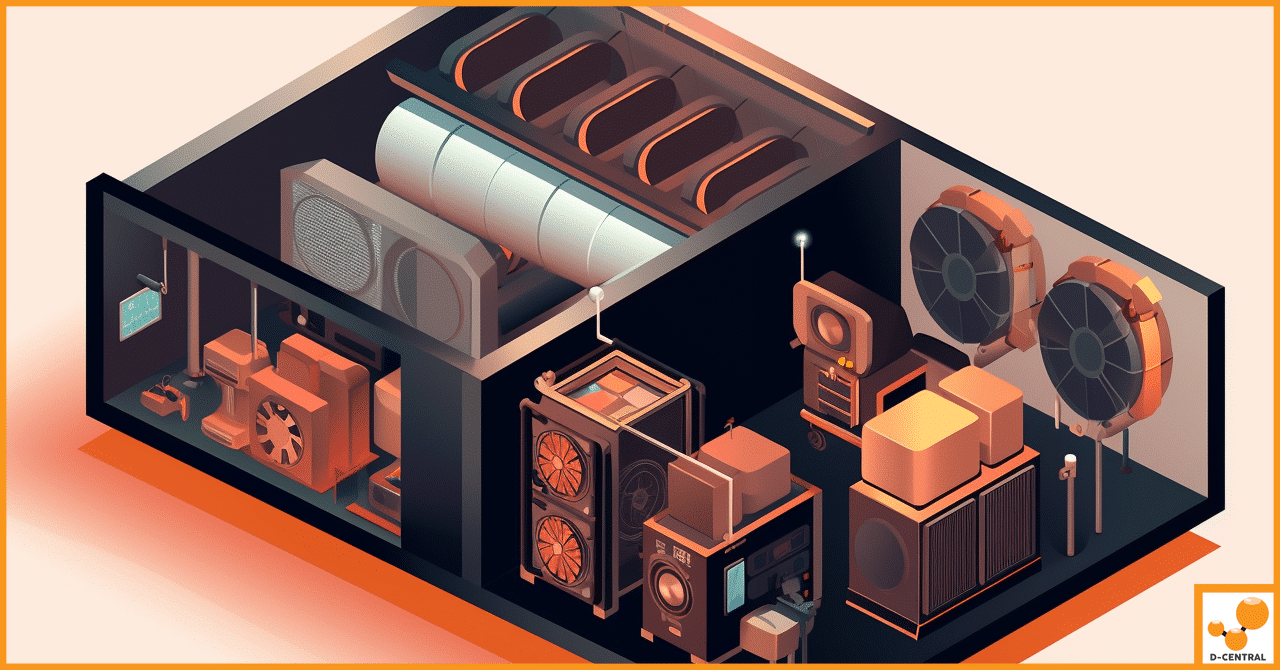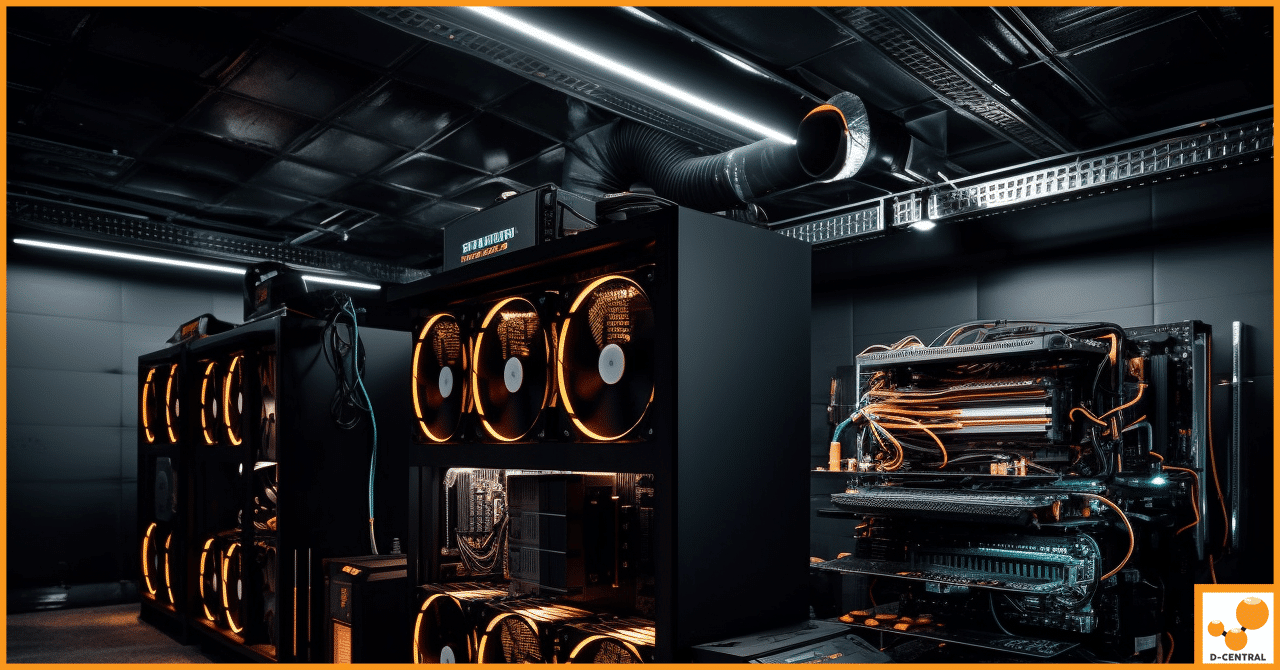
Integrating AC Infinity CLOUDLINE S8 and Bitmain L7 with a Roof Vent for Enhanced Efficiency and Silent Operation
The innovative landscape of Bitcoin mining has never been without its unique set of challenges. Amidst these hurdles are significant
4479 Desserte Nord Autoroute 440, Laval, QC H7P 6E2

Home Bitcoin mining has emerged as an exciting opportunity for cryptocurrency enthusiasts to participate in the blockchain revolution. However, success in this venture hinges on one critical factor: managing electricity costs. In this comprehensive guide, we’ll explore the intricacies of electricity contracts for home Bitcoin mining, providing you with essential negotiation tips and strategies to maximize your profitability.
Home Bitcoin mining involves using personal computing hardware, such as ASIC (Application-Specific Integrated Circuit) miners or GPUs (Graphics Processing Units), to validate transactions on the Bitcoin blockchain and earn cryptocurrency rewards. This exciting venture allows you to dive deep into the world of cryptocurrencies while potentially generating profits from the comfort of your home.
To succeed in home Bitcoin mining, you need to carefully consider the types of hardware that will power your operation. ASIC miners, specifically designed for Bitcoin mining, offer superior efficiency compared to GPUs. The blockchain technology underlying mining plays a crucial role in ensuring transactions are verified in a decentralized and secure manner, maintaining the integrity of the network.
Electricity contracts are the backbone of a successful home Bitcoin mining operation. The energy provider you choose and the type of contract you secure can significantly influence your operational costs and overall mining profits. Understanding the nuances of fixed-rate and variable-rate contracts is essential for optimizing your electricity supply and keeping expenses in check.
Grasping the intricacies of electricity rates and contracts is crucial for home Bitcoin miners. Energy consumption costs can significantly impact your overall profitability, making it essential to conduct thorough market research and analyze energy tariffs. By doing so, you can make informed decisions about which contracts best align with your financial goals.
Investing in energy-efficient mining hardware, such as the latest ASIC miners, can significantly reduce your electricity consumption and costs. D-Central Technologies offers a range of energy-efficient mining solutions tailored for home use.
Mastering the art of contract negotiation is a crucial skill that can dramatically impact your bottom line and efficiency in the Bitcoin mining world. By employing effective negotiation strategies, you can secure better contract terms, competitive rates, and ultimately lower your electricity costs.
Optimizing your electricity contracts is key to maintaining a financially viable and competitive home Bitcoin mining operation. By focusing on energy efficiency and understanding your power consumption patterns, you can make strategic decisions that boost your mining profits.
A home miner implemented smart energy management solutions and negotiated a flexible contract with their utility provider. By shifting 60% of their mining operations to off-peak hours, they reduced their electricity costs by 25%, significantly boosting their overall profitability.
While home Bitcoin mining can be profitable, it’s essential to be aware of the potential risks and challenges that could affect your investment and overall profits. Conducting a thorough risk assessment and understanding these factors is crucial to protecting your investment in this dynamic landscape.
Selecting the appropriate mining hardware is crucial for optimizing your home Bitcoin mining operation. The right equipment can significantly impact your energy efficiency and overall profitability. D-Central Technologies offers a range of mining solutions tailored for home use, balancing performance with energy efficiency.
To maximize the efficiency of your home Bitcoin mining operation, consider these additional tips:
Efficient cooling is crucial for maintaining optimal mining performance. D-Central Technologies offers specialized cooling solutions like the Cloudline fan systems and ASIC shrouds, designed to enhance airflow and reduce noise for various ASIC miners. These accessories can significantly improve your mining setup’s efficiency and longevity.
To truly optimize your home Bitcoin mining operation, it’s essential to grasp the underlying economics. This understanding will help you make informed decisions about your electricity contracts and overall mining strategy.
To determine the profitability of your mining operation, use this basic formula:
Profit = (Bitcoin Mined × Bitcoin Price) – (Electricity Cost + Hardware Cost + Maintenance Cost)
Remember, this is a simplified formula. Various online calculators can provide more accurate estimates based on current network difficulty and other factors.
As the Bitcoin mining landscape continues to evolve, home miners need to stay adaptable and forward-thinking. Here are some trends and considerations for the future of home Bitcoin mining:
The electricity consumption for Bitcoin mining varies widely depending on the hardware used and the scale of the operation. For home miners, it can range from a few hundred watts for small USB miners to several thousand watts for more powerful ASIC miners. It’s crucial to calculate your specific energy usage based on your equipment and factor this into your profitability calculations.
Profitability depends on various factors including electricity costs, hardware efficiency, Bitcoin price, and mining difficulty. While large-scale operations have advantages, home mining can still be profitable with the right setup and electricity contract. It’s essential to do thorough calculations and stay updated on market conditions.
The frequency of hardware upgrades depends on technological advancements and your profitability margins. Generally, miners consider upgrading every 1-2 years to stay competitive. However, with energy-efficient models like those offered by D-Central Technologies, you may be able to extend the profitable lifespan of your equipment.
Yes, solar power can be an excellent option for Bitcoin mining, potentially reducing your electricity costs and environmental impact. However, the initial setup cost can be significant. You’ll need to calculate the long-term savings and ROI to determine if it’s a viable option for your specific situation.
Take the next step in maximizing your mining profitability. Explore D-Central Technologies’ range of energy-efficient mining solutions and expert services.
DISCLAIMER: D-Central Technologies and its associated content, including this blog, do not serve as financial advisors or official investment advisors. The insights and opinions shared here or by any guests featured in our content are provided purely for informational and educational purposes. Such communications should not be interpreted as financial, investment, legal, tax, or any form of specific advice. We are committed to advancing the knowledge and understanding of Bitcoin and its potential impact on society. However, we urge our community to proceed with caution and informed judgment in all related endeavors.
Related Posts

The innovative landscape of Bitcoin mining has never been without its unique set of challenges. Amidst these hurdles are significant

Bitcoin mining is the backbone of the Bitcoin network, where miners use powerful computers to solve complex mathematical problems, validating

In the ever-evolving landscape of digital finance, Bitcoin has emerged as a revolutionary force, challenging traditional banking systems and offering